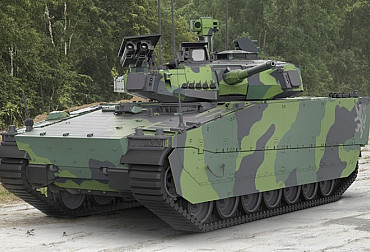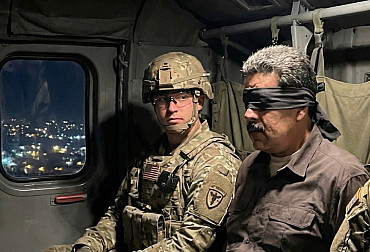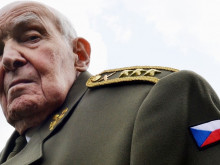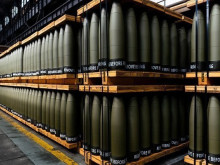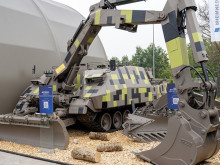Leopard 2A8 as an interesting option for the completion of the Slovak heavy brigade
The development of a heavy mechanised brigade is one of the key commitments Slovakia made when joining NATO. After many years, Slovakia has managed to take a major step in this direction with the purchase of new CV90 tracked infantry fighting vehicles. Slovakia will procure this equipment in cooperation with the Czech Republic and Ukraine. Tanks are also an integral part of the heavy mechanised brigade. Slovakia has not yet decided on the purchase of new tanks, but the Czech Republic's interest in jointly purchasing Leopard 2A8 tanks with Germany offers an interesting opportunity to procure a key element of the Slovak heavy brigade.
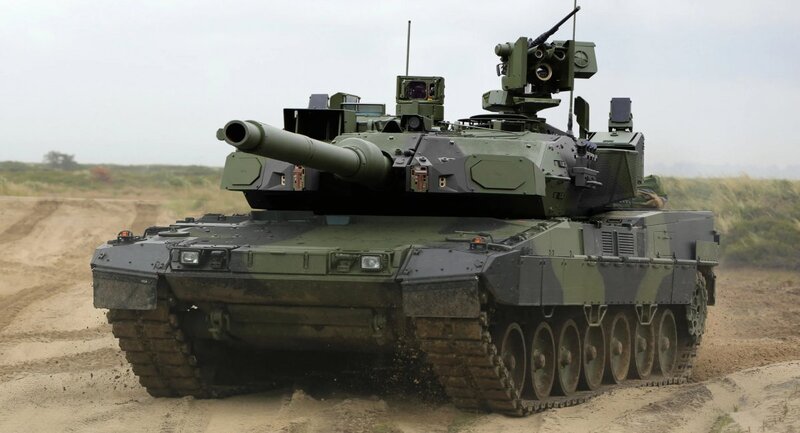 Picture: Slovakia has not yet decided on the purchase of new tanks, but the Czech Republic's interest in jointly purchasing Leopard 2A8 tanks with Germany offers an interesting opportunity to procure a key element of the Slovak heavy brigade. (illustration photo) | KMW
Picture: Slovakia has not yet decided on the purchase of new tanks, but the Czech Republic's interest in jointly purchasing Leopard 2A8 tanks with Germany offers an interesting opportunity to procure a key element of the Slovak heavy brigade. (illustration photo) | KMW
Slovakia has committed itself to building a heavy mechanised brigade by 2026. It is already clear that Slovakia will not be able to meet this commitment, as the first CV90 infantry fighting vehicles will be delivered to the Slovak Armed Forces in 2026. In total, Slovakia has ordered 152 CV90MkIV vehicles with 35 mm calibre cannon for around €1.7 billion. However, Slovakia is not the only country that has recently chosen CV90 combat vehicles as the basis for a heavy mechanised brigade. The Czech Republic, which signed a contract for 246 CV90s with a 30 mm cannon at the recent IDET trade fair, is also acquiring the same equipment from BAE Systems, and Ukraine has also expressed interest in the vehicles.
What is interesting about the acquisition of CV90 IFVs by these three countries is the recent signing of a Declaration of Cooperation on the Acquisition and Operation of Tracked Infantry Fighting Vehicles. According to the Czech Ministry of Defence, the declaration creates a space within which Slovakia, the Czech Republic and Ukraine will inform each other about national acquisition processes. This framework will make it possible to harmonise the requirements of the armies of these countries and seek opportunities for cooperation in production, operation or logistics. In addition to the cooperation with Slovakia and Ukraine for the purchase of CV90s, the Czech Republic is also interested in jointly purchasing Leopard 2A8 tanks with Germany.
Germany recently ordered 18 Leopard 2A8 tanks from Krauss-Maffei Wegmann to replace an equal number of Leopard 2A6 tanks donated to Ukraine. According to available information, Germany may exercise an option for approximately 100 more tanks. At the same time, Germany is allowing other NATO countries to join in the purchase, thereby reducing the cost of acquisition, accelerating delivery and ensuring adequate and high-quality logistical support.
Tank battalion in Slovakia
At present, 30 T-72M1 tanks form the skeleton of the 14th Tank Battalion. According to the data of the General Staff of the Slovak Armed Forces, all these tanks have reached the end of their service life. The situation is beginning to move forward thanks to the delivery of 15 Leopard 2A4 tanks, which Slovakia received from Germany as compensation for the delivery of 30 obsolete BVP-1 vehicles to Ukraine. However, the Leopard 2A4 tanks, despite being more advanced than the T-72M1 tanks, are not among the most modern tanks and thus cannot be expected to be qualitatively comparable to modern assets. On the other hand, the tanks offer an opportunity to become familiar with Western technology. Thus, Slovakia will operate 45 tanks at the end of this year, but of two different diametrically opposed types, and in the case of the T-72 tanks these are machines without further modernisation potential.
An interesting solution is offered by the Leopard 2 tank in the A8 version, or the possibility of joining, together with other countries, the joint purchase of this type of tank together with Germany. As already mentioned, this option is now being considered by the Czech Republic, which would like to acquire over 70 Leopard 2A8 tanks, and also by Norway. The latter opted for Leopard 2A7NO tanks a few months ago and is now negotiating with KMW to change to the 2A8 standard. Italy would also like to acquire modern Leopards. For Slovakia, this is an opportunity to deepen defence cooperation with NATO allies and to acquire modern tanks on more favourable terms.
The joint purchase of Leopard 2A8 tanks can bring several advantages to Slovakia. One of the key ones is the shortening of delivery times for the new equipment. According to the strategic documents, Slovakia is supposed to adopt a solution on the issue of new tanks by 2026. However, waiting until 2026 may lead to Slovakia not having any modern tanks by the end of the decade, as no other main battle tanks are being produced in Europe except Leopard 2 tanks. However, if Slovakia joins the joint purchase of Leopard 2A8 tanks, it is very likely that the Slovak army could take delivery of new tanks before 2030. Other advantages of the joint purchase include a reduction in the acquisition price, sufficient logistical support and sufficient spare parts. At the same time, cooperation with Germany is also geographically advantageous for Slovakia, as Leopard tanks are produced in Munich.
However, the success of the joint purchase will depend on many factors. It is not yet clear how many Leopard 2A8 tanks will be in demand as part of the joint purchase, but if the number is in the order of several hundred units, KMW will have to adequately increase production and provide sufficient material for the production of armoured vehicles. The currently high demand for military equipment and the impact of the coronavirus pandemic and the Ukrainian crisis on supply chains may have an impact on the final price of the tanks. Nevertheless, the possibility of jointly purchasing new German tanks is an interesting opportunity for Slovakia to acquire reliable machines, to deepen cooperation with allies or to have future industrial cooperation in the field of servicing or ammunition production.











